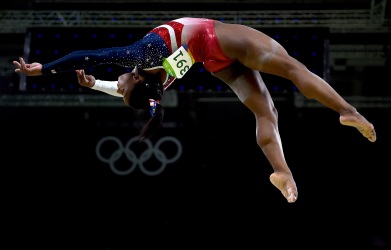Imagery is a way of cognitively reproducing or visualising an object, scene, or sensation, as though it were occurring in overt, physical reality. One of the easiest ways to do this for yourself is to close your eyes and imagine yourself peeling an orange. Think of your nail scraping through the peel, the smell of the fruit, the stickiness of the fruit. And that’s imagery in the simplest of terms. It can be used in sport to visualise movements, e.g. complex sequences in gymnastics, or slow motion imaging of taking a penalty kick.

Imagery can be internal or external therefore it’s essential that you assess whether athlete’s have a preference. This can be done using the Vividness of Movement Imagery Questionnaire which assesses whether athletes visualise the movement as watching themselves, through their own eyes, or by feeling it.
An imagery script can be written with an athlete to maximise the effects of imagery. The more vivid the actions and emotions are, the more valuable the script will be. It’s good to do this with the athlete, with only a small amount of input to help them, as it ought to be written in terms they will use as they are the one using the script. Scripts should include salient details to generate a good image.
| Step 1: Tell the basic story | Step 2: Add the details | Step 3: Refining the script | |
| Descriptors | Action/Emotional Words | ||
e.g. Usain Bolt is writing an imagery script to prepare himself for the 100m sprint.
Step 1: Getting ready
Step 2:Excited but energized, nervous, confident, aware of crowd buzzing
Step 3: I am getting ready for the start of the final in the 100 metre sprint. I am excited but energized, nervous but confident in my ability.
The script can help an athlete to focus and prepare themselves prior to a performance. As they say, if you fail to plan, you plan to fail!
Imagine standing on a putting surface seven feet from the hole. The hole lies at the top of a slight incline. You are aligned to the ball with an effortless stance. Your arms, wrists and putter are a single, relaxed but firm unit. You begin your backswing which is performed with a smooth pendulum like movement. As you make contact with the ball, your forward swing glides above the surface as you maintain a solid flowing form. – Holistic Imagery Script for a golfer
Injury Related Imagery
Imagery can also be used during injury rehabilitation as it can accelerate the process in some cases. If an athlete has injured their knee and has never come across imagery before then a good method is to show them the x-ray and highlight the damage then have the athlete visualise it. Then imagery can be introduced for the physiotherapy exercises used for rehab. Injured athletes have reported using it prior to performing exercises, to maintain their sport-specific abilities, and to motivationally image themselves as healthy. To assess motivational, cognitive, and healing functions of imagery, the Athletic Injury Imagery Questionnaire (Sordoni, Hall, & Forwell, 2002) is used.
